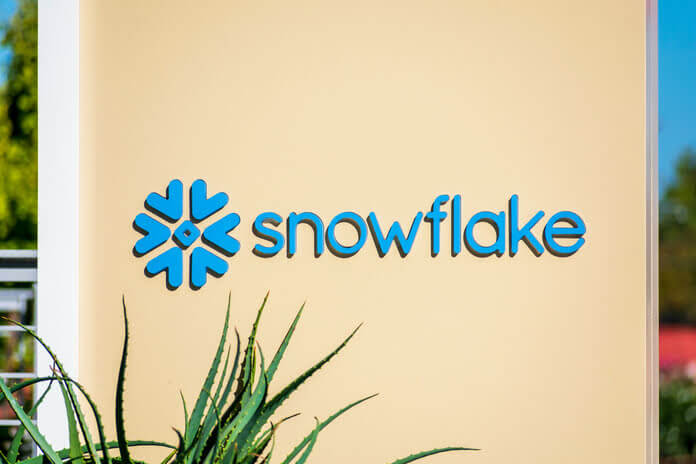Significant insider purchases, such as those made by executives and large shareholders, often signal confidence in a company’s prospects. Their intimate knowledge of the company’s operations and strategy positions them well to assess its true value. Therefore, when insiders invest their funds into company stock, it’s typically interpreted as a positive sign for the shares.
Recent insider buying activity at tech giant Snowflake (NYSE:SNOW) has captured attention. Headquartered in San Jose, Snowflake is a leading cloud-based data software company, offering a platform for storing and analyzing large datasets for various applications including data science, business intelligence, and application development.
With a market capitalization of $50.7 billion, Snowflake’s stock has declined by 22.6% year-to-date, primarily attributed to the unexpected departure of former CEO Frank Slootman, who led the company through its IPO in 2020.
New CEO Sridhar Ramaswamy Makes Significant Purchase
On March 25, newly appointed CEO Sridhar Ramaswamy acquired 31,542 shares of Snowflake at an average price of $158.52 per share, totaling over $5 million. Notably, this purchase grants Ramaswamy, the former Senior VP of AI at Snowflake, a 0.0777% stake in the company.
Additionally, board member Mark McLaughlin purchased over 3,000 Snowflake shares valued at $501,314 on March 6. McLaughlin, the former CEO of Palo Alto Networks (NASDAQ:PANW) and current Qualcomm (NASDAQ:QCOM) board chair, had previously bought approximately $300K worth of Snowflake stock in May 2023, shortly after joining the board.
So, what does this insider activity indicate about Snowflake’s shares? Let’s delve deeper.
Snowflake’s Earnings Performance
In its latest quarter, Snowflake reported revenues of $774.7 million, marking a robust 32% year-over-year increase. Adjusted earnings per share (EPS) stood at $0.35, reflecting a remarkable 150% surge from the previous year and surpassing consensus estimates.
Moreover, net cash from operating activities reached $344.6 million, up by 58.6% from the prior year. The company ended the quarter with a cash balance of approximately $1.8 billion, a substantial improvement from the previous year’s $939.9 million.
Despite these positive financial metrics, concerns arose following the CEO’s departure and Snowflake’s cautious revenue guidance for the current quarter, falling short of consensus estimates.
Growth Drivers for Snowflake
Snowflake appears well-positioned for growth, particularly in the burgeoning data warehousing market. Forecasts project the market to reach $43.45 billion by 2028, with optimistic estimates anticipating $85.7 billion by 2032, driven by a compound annual growth rate (CAGR) of 11% between 2023-2032.
As part of its commitment to innovation, Snowflake aims to transition from a cloud-native, structured data platform to a comprehensive application platform for complex analytics. Initiatives such as the Snowflake Marketplace, Unistore, and Snowpark demonstrate the company’s dedication to enhancing its offerings and capturing market share.
Is Snowflake Stock a Buy?
Analysts anticipate Snowflake to achieve revenue growth of 22% this fiscal year, despite a projected 2% decline in EPS growth.
Overall sentiment on Wall Street remains positive towards Snowflake stock, with a consensus rating of “Moderate Buy” and a mean target price of $205. This suggests an upside potential of approximately 33.2% from current levels.
Out of 40 analysts covering the stock, 24 recommend a “Strong Buy,” 3 suggest a “Moderate Buy,” 11 maintain a “Hold,” and 2 advise a “Strong Sell.”
In conclusion, while Snowflake faces challenges, insider purchases, and strong growth prospects indicate potential opportunities for investors, making it worth considering for long-term investment portfolios.
Featured Image: Megapixl















